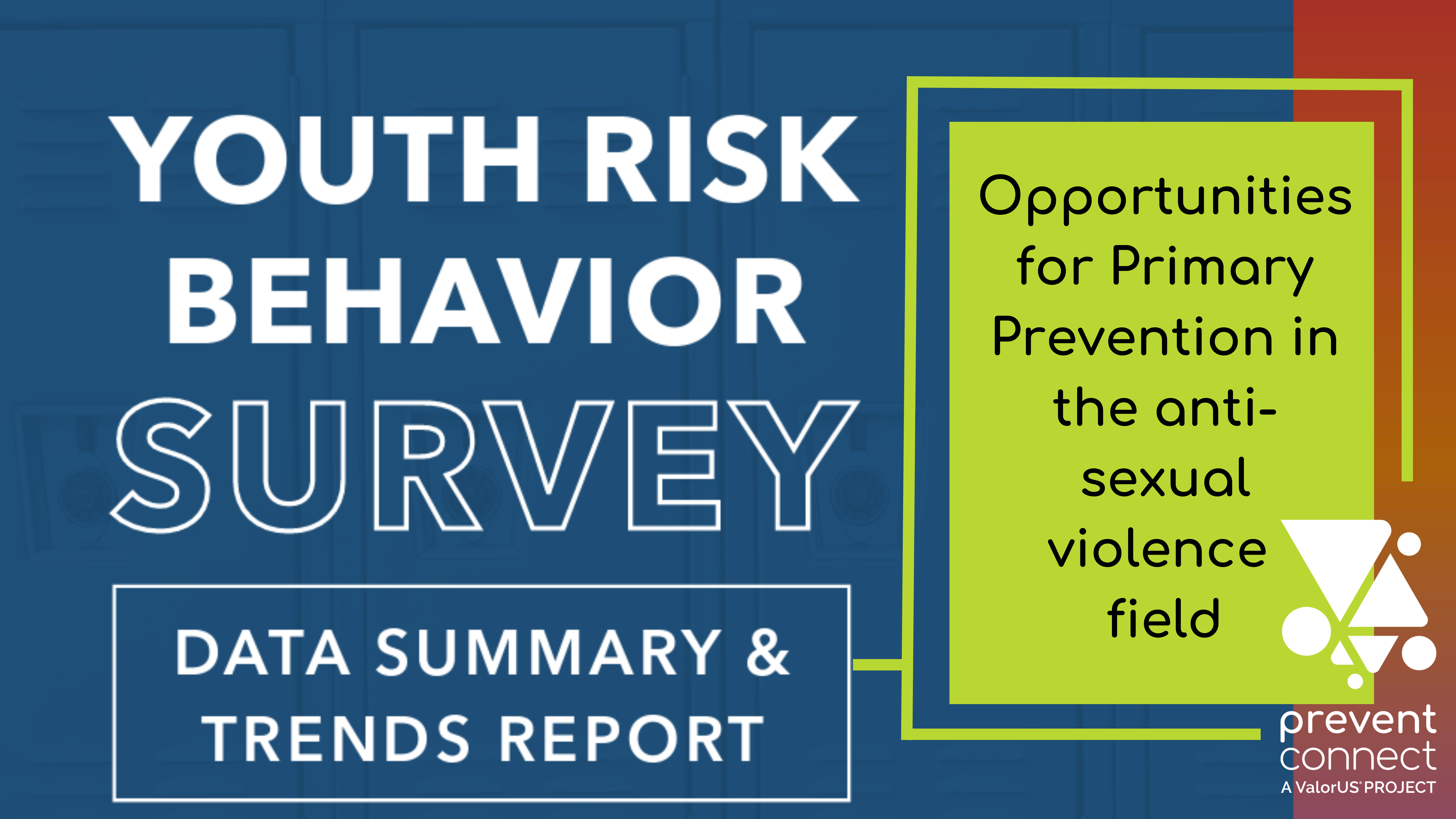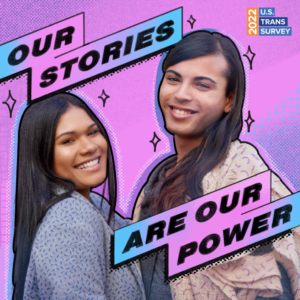CDC outlines opportunities for Preventionists following survey on youth violence and mental health

The statistic hit national headlines after the Centers for Disease Control released the Youth Risk Behavior Survey (YRBS) last week: Adolescent girls in the U.S. are battling hopelessness, violence and despair – they’re experiencing more sexual violence, and their mental health is declining because of it.
According to survey findings from 2021 and 2022, along with trends from the past decade, the number of teen girls who have reported experiencing sexual violence is going up: with nearly 20% of girls who took the survey reporting they were sexually assaulted and 15% reporting they were forced to have sex in their lifetimes. For *LGBQ+ students and some students of color, those numbers are even higher.
 Nearly one in three girls also reported seriously considering suicide in the past year.
Nearly one in three girls also reported seriously considering suicide in the past year.
The numbers tell a harrowing story about the health and safety of girls and marginalized students but, for those of us working in the field, they are not surprising. A recent study, Violence Experiences Across the Lifespan in California (CALVEX), revealed that sexual and intimate partner violence is increasing in California, especially in marginalized communities.
Our communities are struggling, that is not new information to our movement. We know that young people, girls, LGBTQ+ people and black brown and indigenous people are experiencing violence at higher rates and it impacts their health outcomes across their lives. While the country grapples with what the problem is, we are looking to the why, in order to prevent it.
“The high level of trauma that this data illustrates requires us to take action to end cycles of violence,” said Sandra Henriquez, Chief Executive Officer (CEO) of ValorUS® (VALOR). “We know that preventing sexual violence works and it is time to invest in comprehensive prevention resources.”
For the first time since the YRBS was developed in 1990, researchers asked youth about the factors in their lives that contribute to the health disparities they face.
Researchers asked youth about their experiences in three Social Determinants of Health areas (school connectedness, parental monitoring and unstable housing), which have been proven to impact the likelihood of people experiencing health disparities like violence and suicidal thoughts.
They found that students of color and *LGBQ+ students experienced more unstable housing than their peers and girls, students of color and *LGBQ+ felt the least connection to their schools, which in turn puts them at higher risk of experiencing negative health outcomes like violence, substance misuse and mental health challenges.

At first glance, it tells a discouraging story: When our systems fail our youth, they suffer greatly in every aspect of their lives. But for those of us working to end sexual violence and advance health equity, it provides a clear perspective of what’s going wrong, where we can intervene to do better and how we can explain the connection to people outside of this field.
The YRBS goes on to outline actions prevention practitioners, school staff and supportive adults can take to improve adolescent health and well-being, with a strong emphasis on working in and alongside schools to create inclusive environments.
According to the YRBS, with more than 95% of children and adolescents in the U.S. spending the majority of their daily lives in school, schools provide a unique and powerful opportunity to reach youth, empower them with the skills to live healthy lives and a safe and supportive environment to grow in.
They recommend strong partnerships between school staff and community-based organizations to not only foster inclusive learning environments, but to help shape the skills, behaviors and experiences that youth will carry through their lives. CDC-vetted recommendations include:
- Creating school-wide cultures that are inclusive and responsive to LGBTQ+ students and students in racial and ethnic minority groups
- Increasing access to needed services by improving school-based services and connecting youth and families to community-based sources of care
- Providing sexual Health education that is grounded in science, medically accurate, developmentally appropriate and culturally and LGBTQ+ inclusive
- The CDC linked to What Works in Schools, an evidence-based HIV and STD prevention, which includes quality sexual health education, connecting students to sexual health services, and establishing safe and supportive school environments.
While these strategies have been outlined in the STOP Sexual Violence Technical Package and are not new to prevention, practitioners, they help to make the case for school-based prevention work and equip prevention practitioners with tools to make the case for their work.
The report clearly and explicitly states that “the [YRBS] data makes it clear that young people in the U.S. are collectively experiencing a level of distress that calls on us to act.”
Today, we know how we can act, and have evidence that it will make a difference. It is up to those of us working in prevention and the communities we work alongside to take action.
____________________________________________________________________________________________________________
*The YRBS survey did not include data on trans, non-binary and gender non-conforming youth. In explanation for why the data did not include trans identities, the authors wrote: “Because the 2021 national YRBS did not have a question assessing gender identity, this report does not highlight data specifically on students who identify as transgender. Therefore, the T commonly used in the acronym LGBTQ+ is not included when referring to the data. However, strategies to improve adolescent health should be inclusive of all students who identify as LGBTQ+, so the full acronym is used when highlighting actions.”

As we as a movement and a society grapple with the struggles our youth are facing, we must note that an entire identity of youth have been left out, many of whom are living at the intersections of multiple oppressed identities and who need our support the most.
Despite alarmingly scarce data on transgender identities and experiences, reports like the Transgender Survey Report and the California Healthy Kids Survey clearly illustrate the severe harassment, discrimination and violence transgender people face and the deep impacts that violence has on health disparities.
According to a 2022 report on LGBTQ+ mental health from the Trevor Project:
- For transgender boys, 59% contemplated suicide and 22% attempted suicide.
- For transgender girls, 46% contemplated suicide and 12% attempted suicide.
As the authors of the YRBS report state, making school environments safer and more inclusive for LGBTQ+ students not only improves the health and well-being for LGBTQ+ youth but also for their peers.
Advancing Health Equity means centering the lived experiences of people who are most impacted by violence. That means telling the stories of transgender youth and including them and their voices in our prevention strategies.
